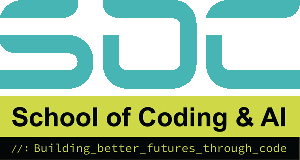Introduction
When it comes to job applications, knowing the difference between CV and Resume will help you land your ideal job. These phrases are frequently used interchangeably, however they are far from the same. Knowing when and how to use each document may distinguish you from other candidates. Whether you’re a fresh graduate, a seasoned professional, or changing careers, this article will help you understand the complexities of these essential job application tools.
Let’s examine the seven main differences between CV and resume, answer common queries, and ensure that you’re prepared to customise your approach to each situation.
What Is a CV?
A CV, or Curriculum Vitae, means “course of life” in Latin. It is a detailed document that emphasises your academic background, professional experience, talents, accomplishments, publications, awards, and other career milestones. CVs are commonly used in academia, research, and positions that need thorough documentation of your professional background.
- Length: Typically lengthier, often two or more pages.
- Purpose: Used for academic or research positions.
- Content: A comprehensive review of professional and academic accomplishments.
- Format: Chronological, with emphasis on comprehensive career progression.
What Is a Resume?
A resume, on the other hand, is a brief document designed for a single job application. Its objective is to present a summary of your skills, experience, and qualifications that match the employment requirements.
- Length: Typically one page, but can be extended to two for senior positions.
- Purpose: For employment applications in most industries.
- Content: A targeted summary of qualifications and accomplishments.
- Format: Customisable to showcase key skills and achievements.
7 Key Difference Between CV and Resume
1. Length
Depending on your expertise and achievements, a CV can be many pages long.
A resume, on the other hand, is succinct and usually only one or two pages long.
2. Purpose
CVs are commonly used in academic, medical, and scientific professions to provide extensive record of career accomplishments.
Resumes are commonly used in the business, technological, and creative industries to demonstrate job-specific talents.
3. Content
A CV summarises your academic and professional experiences.
A resume, on the other hand, emphasises significant accomplishments and skills that are particular to the position.
4. Format
CVs typically follow a chronological format with few variations.
Resumes offer versatility, with formats such as reverse chronological, functional, and hybrid approaches.
5. Geographical Usage
CVs are used for most job applications in the UK and Europe, whereas resumes are more frequent outside of academics in the United States and Canada.
6. Personalisation
A CV is a static document that grows over time, however a resume is carefully customised for each job application.
7. Focus
CVs highlight academic qualifications, such as publications, research, and affiliations.
Resumes highlight talents, professional accomplishments, and results that are relevant to the position.
Also Read – 7 Powerful Benefits of Learning Excel for Career Success
Tips for Crafting a Winning CV or Resume
1. Use action verbs
To show impact, begin bullet points with strong action verbs such as “lead,” “managed,” “increased,” or “developed”.
2. Tailor each application
Make sure the content of your CV matches the job description. Use keywords that correspond to the employer’s needs.
3. Keep the formatting professional
Choose a clear, readable typeface (such as Arial or Times New Roman). Maintain consistency in the formatting of headings, bullet points, and margins.
4. Highlight Achievements
Quantify accomplishments whenever possible. For example, “Increased sales by 30%” has a greater impact than “Responsible for sales.”
5. Proofread
Avoid grammatical and typographical errors. Double-check your contact information to guarantee it is correct.
Conclusion
Understanding the differences between a CV and a resume is critical for successful job applications. Each document has a certain purpose, and choosing the appropriate one can significantly improve your chances of success. A CV is your detailed career history, whereas a resume is your targeted pitch. By understanding when and how to use each, you can position yourself as the best candidate for each situation.
Take the time to perfect your CV and resume, ensuring that they reflect your greatest qualities. Remember that your job journey is distinctive, and so should your application documents.
Frequently Asked Questions (FAQs)
Can a CV be used instead of a resume?
In academic or international settings, a CV may be useful. Most corporate positions, however, require a resume.
What information should I include in my CV or resume?
A CV includes academic background, employment history, research, publications, awards, and affiliations.
Resume: Contact information, a short statement, abilities, work experience, and relevant accomplishments.
Is a CV required for all job applications?
No. For non-academic positions, a résumé is usually necessary. Investigate the expectations for your industry.
What is the ideal length of a CV and resume?
CV: As long as necessary to describe your achievements.
Resume: One to two pages maximum.
How do I choose which to use?
Consider the employment position, industry, and location. Tailor your application based on the recruiter’s requirements.








